Which of the following is an abiotic factor that can influence the quantity of fish a pond can support?
A. availability of plants
B. concentration of bacteria
C. quality of water
D. number of consumers
C. quality of water
What is the primary source of energy for most living organisms.?
The sun
Which two organisms are classified as secondary consumers? 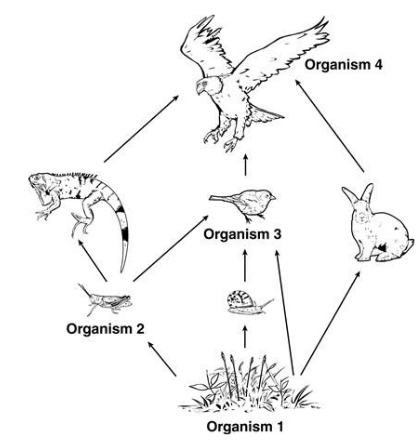
Organism 3 and Organism 4
What is the role of fungi in an ecosystem?
To decompose other organisms and recycle nutrients in the ecosystem.
Which biome is known for its high precipitation and large diversity?
Tropical Rainforest
Which row shows abiotic factors?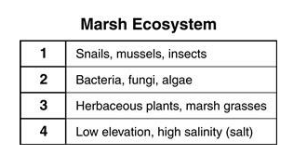
Row 4
Which organism produces the food that provides energy to the food chain?
sun → grass → prairie dog → ferret → hawk
Grass
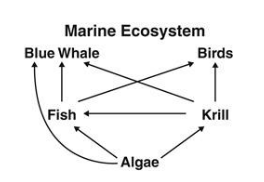 Which statement describes a role of krill in this food web?
Which statement describes a role of krill in this food web?
A. Krill are included in the energy flow to blue whales.
B. Krill are the only omnivores within the ecosystem.
C. Krill obtain most of their energy from fish.
D. Krill are key producers in this ecosystem.
A. Krill are included in the energy flow to blue whales.
What is a producer?
An organism that can make its own food.
How are air temperature changes most likely to affect the survival of animals in water biomes?
A. by affecting soil quality
B. by disrupting the animals’ homeostasis
C. by creating winds that blow pollution into the water
D. by increasing competition for food resources among the animals
B. by disrupting the animals’ homeostasis
What is an ecosystem?
Any group of living & nonliving things interacting with each other
Which organism in this food chain most likely has the smallest population?
sun → pine tree → grasshopper → mouse → owl
Owl
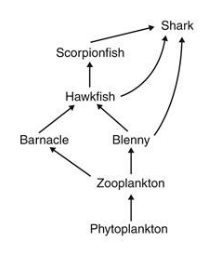 Which is the MOST likely result from an overpopulation of barnacles?
Which is the MOST likely result from an overpopulation of barnacles?
A. decrease in zooplankton
B. decrease in hawkfish
C. increase in blenny
D. increase in sharks
A. decrease in zooplankton
What similarity does a fungus and a rabbit share?
They both rely on outside food sources to live.
Climate change results in increased average temperatures in a tundra ecosystem. How will this most likely affect the organisms in the ecosystem?
A. Organisms will experience mass extinctions.
B. Organisms will be better able to find food resources.
C. Organisms will no longer be able to transfer energy to each other.
D. Organisms that are better adapted to the new environment will survive.
D. Organisms that are better adapted to the new environment will survive.
What is a biome?
a large ecosystem that has distinctive organisms and a particular climate
 Which describes the role of one of the biotic factors?
Which describes the role of one of the biotic factors?
A. The egret provides water for the blue crab.
B. The blue crab supplies energy for the egret.
C. The snail obtains nitrogen for the cordgrass.
D. The cordgrass breaks down other living organisms.
B. The blue crab supplies energy for the egret.
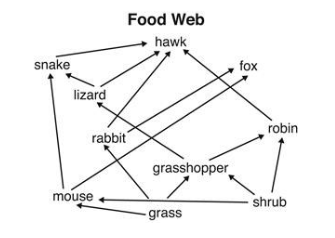 Name a food chain that makes up this food web.
Name a food chain that makes up this food web.
Answers will vary.
What process allows producers to make there own food?
Photosynthesis
Which biome is home to snow hares, artic wolves, caribou, and polar bears?
Tundra
What is a population?
Group of interbreeding organisms in one place at the same time
Which organism in this food chain most likely has the largest population?
sun → grass → grasshopper → snake → hawk
Grass
What would likely happen to the algae population if there was an overabundance of birds in this ecosystem?
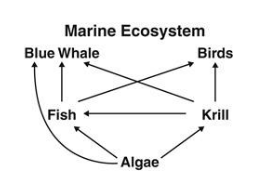
There would be an increase in the algae population.
Are scavengers producers, consumers, or decomposers?
Consumers
Which biome do we live in?
Temperate Deciduous Forest